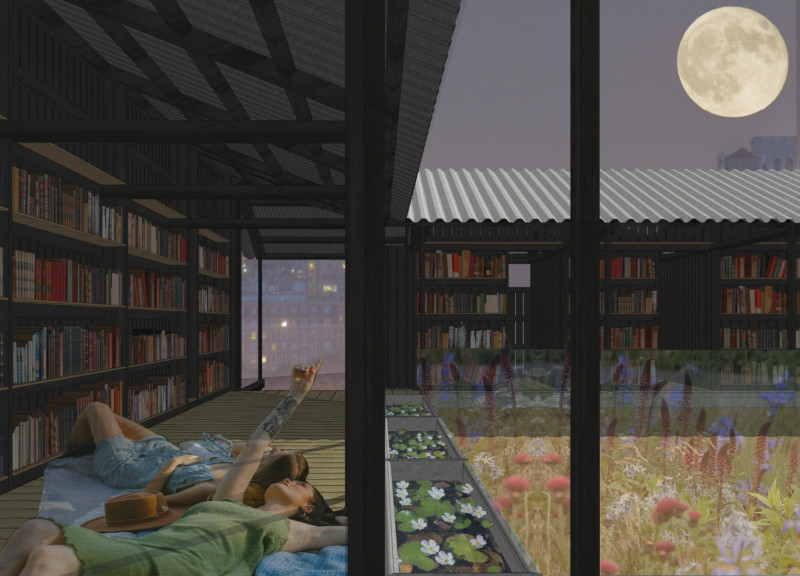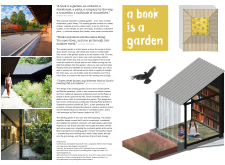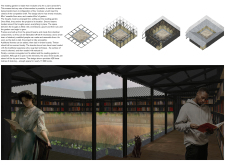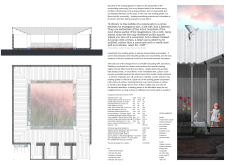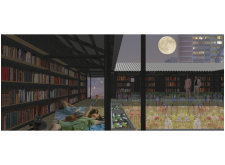5 key facts about this project
## Overview
Located in a modern urban setting, the reading garden project "A Book is a Garden" provides a multifunctional space aimed at fostering community engagement, enhancing mental well-being, and promoting literature. The design incorporates a low-cost, modular framework that is adaptable to various environments, prioritizing sustainability and efficiency. This dual-purpose structure functions simultaneously as a library and a garden, creating opportunities for interactions with nature while encouraging social connections through reading.
## Structural and Spatial Strategy
The modular design consists of components measuring 2.4m x 2.2m, allowing for efficient construction and scalability to accommodate diverse community needs. The project encompasses a maximum floor area of 90m², with 45m² dedicated to landscaped gardens, highlighting the integration of built and natural elements. The open layout minimizes walls, except for a limited roof structure, thereby providing an unobtrusive connection to the surrounding landscape. Transparent design features optimize natural light while utilizing louvers to mitigate weather exposure, promoting a user-friendly environment conducive to relaxation and interaction.
## Material and Environmental Considerations
The project emphasizes local sourcing of materials to enhance sustainability. Timber is primarily used for framing and furniture, chosen for its renewable properties, while a durable corrugated metal roof facilitates maintenance and longevity. Additionally, integrated ground troughs for rainwater irrigation promote responsible water management. The landscape design highlights native flora, fostering local biodiversity and offering educational opportunities regarding local ecosystems. This community-focused strategy encourages residents to engage in gardening, fostering environmental stewardship and active participation in the shared space.
The financial feasibility of the project is notable, with an estimated cost of approximately £14,000, exclusive of VAT, positioning it as an accessible solution for a broad range of communities.


